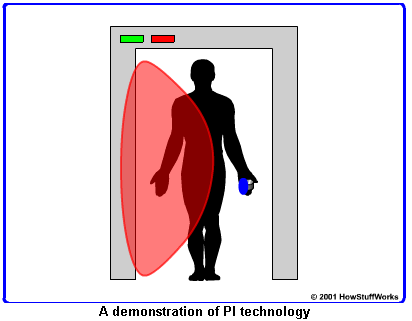
Entrance Detector
This is the entrance to the room or hallway where the installation will be fixed. The detection whether the cell phone is present in the pocket of the person or not will be determined after the person enters in the room. This will be based on the pulse induction (PI). Typical PI systems use a coil of wire on one side of the arch as the transmitter and receiver. This technology sends powerful, short bursts (pulses) of current through the coil of wire. Each pulse generates a brief magnetic field. When the pulse ends, the magnetic field reverses polarity and collapses very suddenly, resulting in a sharp electrical spike. This spike lasts a few microseconds (millionths of a second) and causes another current to run through the coil. This subsequent current is called the reflected pulse and lasts only about 30 microseconds. Another pulse is then sent and the process repeats. A typical PI-based metal detector sends about 100 pulses per second, but the number can vary greatly based on the manufacturer and model, ranging from about 25 pulses per second to over 1,000.


